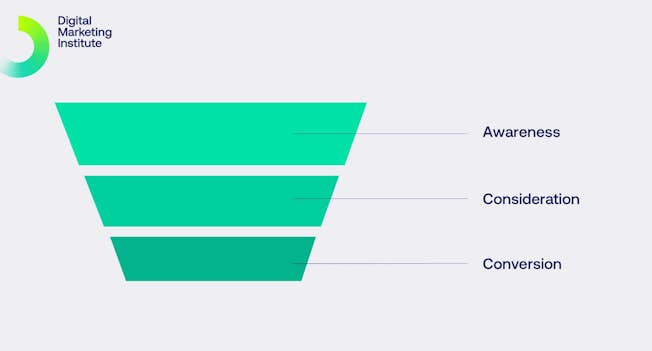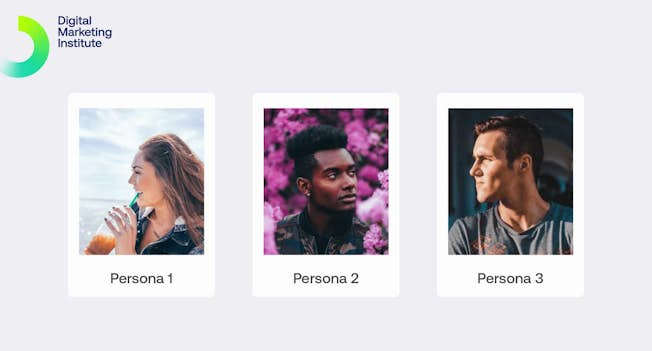May 19, 2020
Content Marketing: How to Create great and distribute great content
No matter what kind of digital marketing you engage in, you’re going to need great content. Great content doesn’t involve plugging your products endlessly. Instead, it offers real value to people – and most importantly, it serves a purpose.
Defining content marketing
When you have great content, your customers will look forward to receiving it – whether that’s via a new video uploaded to your website, a funny email, or an informative blog post. They will want to spend time with it and share it with their friends. This positive sentiment, in turn, can be great for your bottom line, as it usually leads to better customers who are loyal to your brand.
So it makes sense to ensure that content marketing is at the heart of all your marketing tactics. Let’s dive straight into the world of content marketing and what it can do for your business.
We start with a definition of content marketing. Content marketing is the creation and sharing of content in different formats such as videos, blogs, and social media posts, to build interest in a product or service.
It is becoming increasingly important for marketers to understand content marketing and to know how to use it effectively. The rise of ad blockers, algorithms, private social, and many other factors is increasingly limiting our ability to reach consumers. However, content marketing cuts through these barriers, because it is centered on creating written and visual assets that have a genuine and intrinsic value to people.
This requires a change of thinking for many marketers, because it doesn’t feel like marketing. And this is precisely why it works.
Purpose of content marketing
The purpose of content marketing is to drive both inbound customer engagement and organic searches (using search engine optimization, or SEO) from a defined audience, which can then be nurtured to convert into valuable customers. Content is strategically created or curated, and distributed in key locations across the internet to attract customers to your website.
What is Inbound marketing?
But what exactly is inbound marketing? Well, it’s a strategy where brands use content marketing to attract customers. The key driver of inbound marketing is consumer intent as potential customers actively seek out the brand’s content. As a result, consumers are more engaged and open to taking action than if the brand were to communicate with them when they are not actively interested.
What is Outbound marketing?
Outbound marketing, on the other hand, is when the brand pushes its messages out to as many people as it can within a target audience. The brand believes that this audience is a good match for the product or service being advertised. Of course, consumers might not be interested in the product at that particular time! So outbound advertising is generally less effective than inbound marketing at driving action.
What is a content marketing strategy?
Content marketing drives valuable search traffic and social engagement. These in turn can increase the number of valuable actions taken by your audience.
To create a successful content marketing campaign, you first need a strategy! This sets out the objectives and scope of your project. It keeps everything on track while providing a roadmap outlining the different aspects of your campaign.
Applying funnel techniques
You can use the conversion funnel as a guide when planning your content marketing strategy. This enables you to map your content to key decision points in the consumer journey and address their needs. The conversion funnel helps you understand the consumer journey by tracking the different steps a typical consumer would complete on the way to taking a valuable action, such as a purchase, sign up, or contact request. Content marketers should use funnel insights and knowledge to drive more valuable customer engagement.
In order to apply funnel techniques to your content strategy:
- Begin with awareness content for the top of the funnel to get the word out there.
- Create consideration content for the middle parts of the funnel, when people are assessing options in the market.
- Produce high-impact conversion content for the bottom of the funnel. This drives people to take action.
- Create retention content for past purchasers to turn them into repeat purchasers, or even brand advocates.
- It might also be worth creating re-engagement content for people who’ve dropped out at different stages of the consumer journey to entice them back.
Where appropriate, marketers can use what is known as hero content as part of the funnel. This is high-value content that aims to drive brand awareness. Although it is created less frequently, it can cause a brand’s message to go viral! Examples of hero content include research studies, high quality infographics, e-books, and highly unique and desirable audio/video (AV) content such as exclusive videos or podcasts.

What is a content strategy?
So why develop a content strategy? Well, there are a lot of moving parts in a content strategy. Clearly, it’s a useful document to create to get buy-in and sign-off from stakeholders. It can also act as a roadmap for the project itself. And it can be referred to when queries arise and can be adapted to suit the changing needs of the campaign and audience, as required.
- A content strategy ensures content is developed for purpose by:
- Defining your objectives, KPIs, budgets, and audience personas
- Capturing your brand or campaign story
- Detailing production pieces, such as formats and timings
- Outlining distribution channels
- Measuring the performance of your content in terms of business impact and KPIs
Key considerations when developing a content strategy
Take into account these key considerations, dependencies, and constraints when developing a content strategy:
- Scope of production: Identify the type and quantity of assets and formats you plan to deliver.
- Timeline for production: When will you deliver each part of the strategy? Plan your timeline carefully and ensure you’ve allowed enough time for each stage of production.
- Budget and production resources: What is required in terms of money and people to deliver your content efficiently?
- Upstream dependencies: What has to happen for the strategy to progress? Try to identify any potential issues in advance and put a solution or alternative plan into place.
- Downstream dependencies: What must the strategy deliver for something else to progress?
- Risks: What could happen to derail the plan? Factor in some contingency time for unexpected delays or complications.
It takes time to plan and execute a content marketing strategy effectively. Because there are many moving parts, you’ll need to be flexible and ensure your strategy is agile. Can it evolve in response to changing business objectives, KPIs, and performance? More than any other discipline, content and asset production takes time and money. So, in order for the strategy to succeed, you must understand the full requirements to deliver on your plan from the beginning.
What is a buyer persona?
One tactic that content marketers can use to develop a successful strategy is to develop buyer personas.
A buyer persona is a snapshot of your ideal customer. You need to know as much as you can about the behaviors and attitudes of your ideal customer, in relation to the objectives you have set for your content strategy. This can then help you to focus on creating the most engaging content for your customer.

Benefits of using buyer personas
The benefits of using buyer personas to inform your content creation include:
- Improved targeting: Personas help you to adjust and focus your content, so that it is strategically positioned to target consumers who are likely to be interested in it. Personas provide valuable insights that you can use to convey your message to the right audience at the right time. They also enable you to perform market research, targeted advertising, usability testing, and keyword research more efficiently.
- Format: Personas give you the information and perspective you need in order to make objective decisions about how to craft your brand messages through the most consumed and widely accepted formats like videos, social media posts, and articles. This allows you to create compelling content that meets the needs of each persona.
- Discovery: Personas help you discover insights into your audience’s channel behavior. Where are they having conversations? What topics are they interested in? If you distribute tailored content to where your audience is already active, you can then leverage their online behaviors to the maximum effect for your business and your content marketing.
Key considerations when developing buyer personas
It’s vital to develop your personas based on your audience’s content and information needs. You can then position your brand or business as the solution to their requirements.
Ask yourself the following questions when creating personas:
- Objectives: What are your ideal customers looking to achieve by interacting with your business? How many competitors will they consider? What information is pertinent to their decision?
- Location: Where are your personas from? Where are they based? This will include cultural considerations.
- Demographic: What age group are they in? What is their marital status?
- Job details: What’s their economic position or job role?
- Platforms: Which online platforms do they use? Where is the conversation happening with your target audience?
- Devices: What devices do your personas primarily use to access the internet? What kind of connection do they have? For example, is it high-speed broadband?
- Purchase behaviors: What steps do they take when considering a purchase?
Interests: What topics are they interested in? What issues are they trying to solve? How do these issues impact on their lives? How can your brand help? And how will solving these issues benefit them and your brand?
You can gather a lot of information from social media, and search and website analytics, but some of the more specific questions may require you to conduct some primary research via interviews, focus groups, or surveys.
Best practices when using buyer personas
When using buyer personas in your content strategy, it’s a good idea to follow these best practices:
- Prioritize: You can prioritize your personas in terms of how easy it is to reach them; or you may consider their value to your business. You could use a reach/value matrix to help visualize this.
- Budgets and resources: Use your prioritization to help set budgets for production and allocate resources.
- Creative messaging: Develop creative messaging and assets that align to their needs, solve their problems, and showcase your business in a useful, authentic way.
- Content distribution: Distribute your content to the channels and devices they use, and align your content production outputs to the requirements of these channels.
- Purchase journey: Create the types of content they need at key stages of their purchase journey.
- Internal expectations and KPIs: Manage internal expectations and set KPIs for conversion outcomes by understanding the typical conversion journey, as detailed in your persona research.
Now you know what content marketing is, and the importance of developing an effective content marketing strategy that’s centered on the needs, attitudes, and behaviors of your audience. You have the basic know-how, so jump right in – there’s nothing stopping you! Start creating compelling, valuable content today that your audience loves to share and that delivers for your business at the same time.
- Categories:
- Articles
- Content Marketing
Upgrade to Power Membership to continue
your access to thousands of articles, toolkits, podcasts, lessons and much much more.
Become a Power Member- Login
- View Courses
- - - -
- Courses
- Resources
- - - -
- My Account
- Change Password
- Logout




